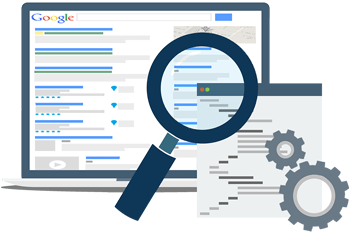Get your free consultation today!
Share with your Colleagues
Categories
ROI Calculator
Moonstone Interactive is the only San Francisco Bay Area web design firm and Internet Marketing expert that offers a free online ROI Calculator
Author: Global Administrator

For SEO (search engine optimization) savvy web developers and designers, it used to be common practice to design for the search engine web crawler instead of the user. But a decade ago, before Google and other search engines became more sophisticated, search engine optimized content and web design often lead to web pages packed with as many keywords as possible. Although that strategy was effective then, it won't be as useful now that updated search technology and the increased consideration for UX (user experience) has made a whole new approach to web design necessary.
And when it comes to Google search, in fact, designing for UX has actually become more valuable than designing for SEO. But that doesn't mean you should abandon SEO as a strategy altogether. As sophisticated as Google and other search engines have become, some UX design elements still aren't SEO-friendly. Some of the most common UX elements may be affecting Google’s ability to crawl your company's website.
One design element that matters to both UX and SEO is the imagery. Today's mobile-ready web design favors a clean aesthetic, and text-only pages are often more appealing to users than pages that are splashed with multiple images. That's especially true if the images are generic stock photos or some other poorly executed design element. Images definitely have their place in UX-focused design, but only if they are done well.
As for the SEO value of your jpgs: image files do appear in Google image searches. An image is more likely to provide SEO value if it's accompanied by relevant text and labeled with a descriptive file name. Be sure not to hide important text within the image.
Click-to-expand, or tabbed content, is another design element that can muddle the balancing act between UX and SEO. Click-to-expand elements are links or tabs that reveal more content when they're clicked on. Though hiding content in this way can provide space for more content without cluttering up the design, Google doesn't seem to be indexing these elements. That means text or images within the tabbed content aren't providing SEO value to your site. To counter this unintended consequence, it's best to use this UX-focused element sparingly.
Casting doubt on the commonly held belief that users won't scroll, a design element that relies on it has become increasingly common in UX design. Infinite scrolling -- as seen on sites like BuzzFeed, Tumblr, and Pinterest -- means that content will keep loading for as long as the user continues to scroll down. But while that's great for the user experience, it's not so great for SEO.
The problem with infinite scrolling is that web crawlers can't do it, and so the content that a user would see after scrolling remains invisible to Google search engines. Luckily, Google has a recommendation for those who can't stand to lose the feature: Compliment infinite scroll with pages of content that make it easy for both users and web crawlers to find the content that they're looking for. BuzzFeed takes advantage of this recommended strategy.
Moonstone Interactive uses a web design approach that will use UX to compliment the best SEO strategies so your site will not only read well for Google and other search engines but will also provide a great experience for the user.


